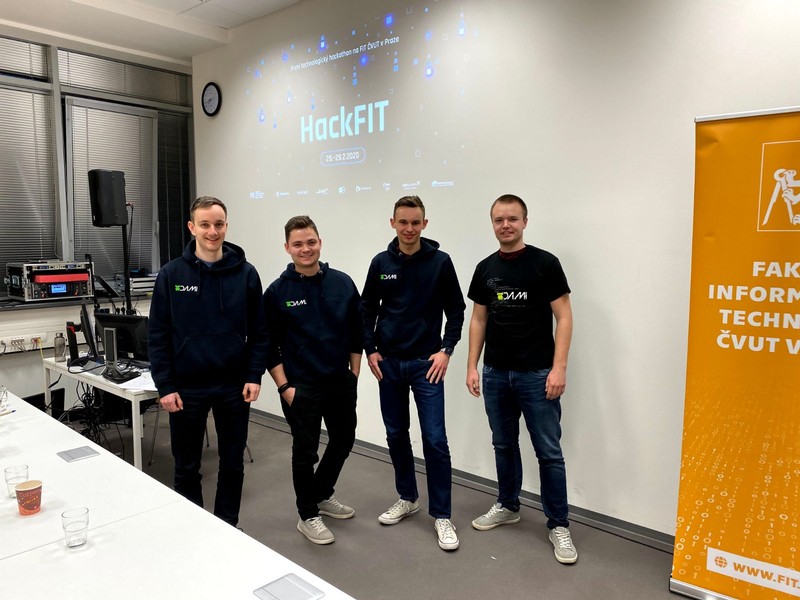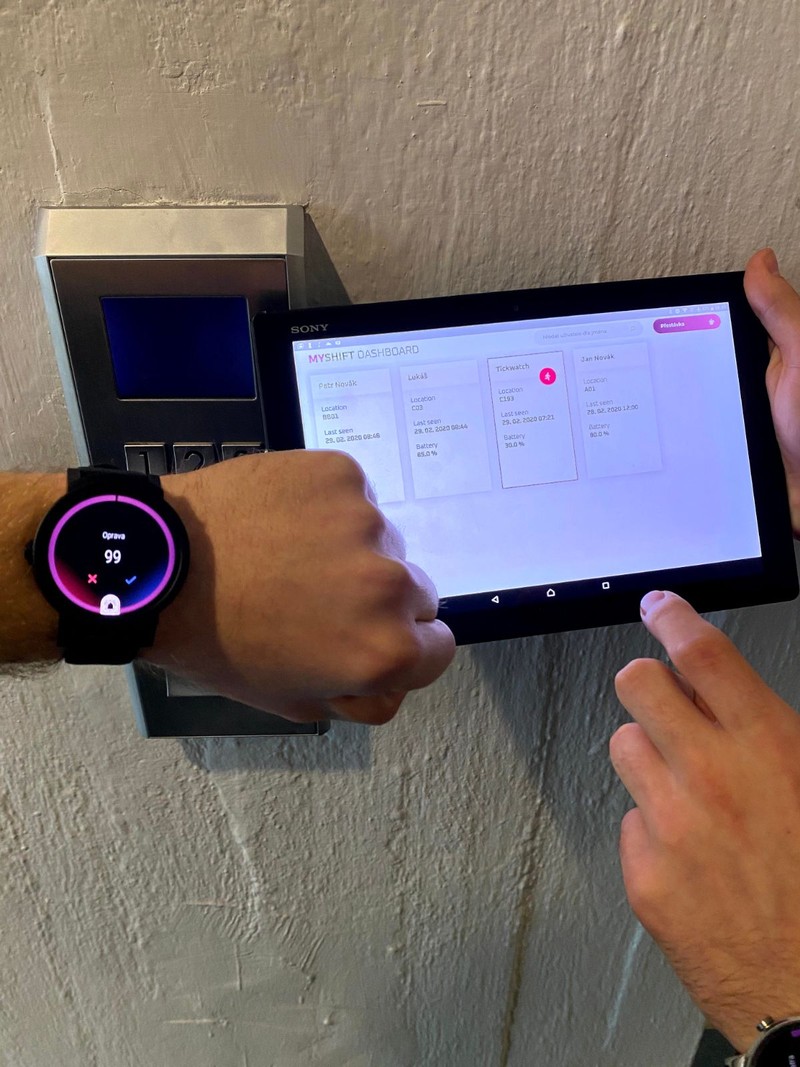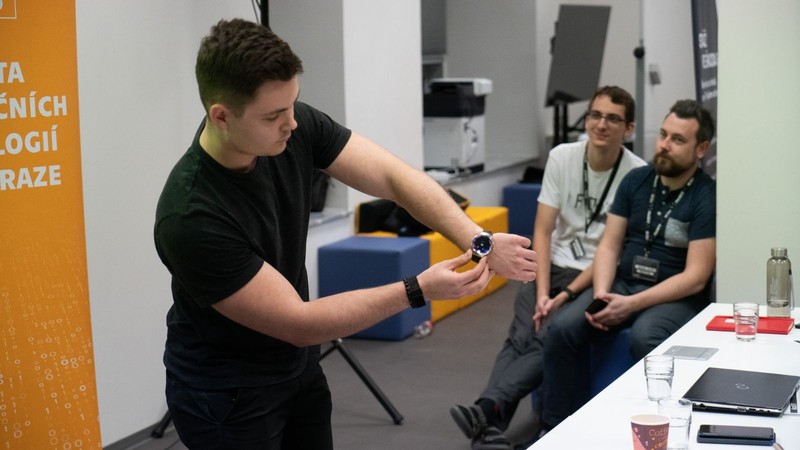We only had 24 hours to create a winning project. The first signs of fatigue didn’t appear until around six in the morning

The Faculty of Information Technology of the Czech Technical University in Prague organised the first technological hackathon HackFIT 2020. It took place on 28th and 29th February 2020 and it was no easy feat to participate in. Individual teams had very little time to persuade the judges that their project, and no other, was the number one project. They only had 24 hours to prove themselves. The competition opened at 4 pm on Friday and closed at 4 pm on Saturday. Out of more than 60 talented youngsters, a team of 4 students from the Faculty of Informatics and Management of the University of Hradec Králové took first place. They were awarded prizes worth tens of thousands of Czech crowns. Petr Weissar, a member of the winning team, gave us a short interview after he got over his sleep deprivation and had slept off some of the excitement.
Where did you find out about the competition and how did you put your team together?
The competition details were on the Internet. My friend Štěpán Záliš found out about it and he invited me, Filip Oborník and Tomáš Pařízek to join him. We study at the FIM UHK.
What was the topic of the competition? What was the objective?
HackFIT had pre-listed topics from its sponsors. They were topics like the use of web cameras to forecast the weather, the use of neural networks for the analysis of financial resources and the use of various components for IoT expansion, to name but a few. But you could also pick a topic of your choice and that’s why we initially chose The use of sensory data from wearable electronics with data on the use of applications for behaviour detection.
We consulted with our mentors on this topic at the beginning of the competition and we came to the conclusion that it doesn’t have as much business potential as it should have for the final presentation. That is why we decided to go for an alternative topic suggested by Skoda Auto. It was Streamlining production processes with wearable electronics.

How did the competition go? Did you encounter any setbacks?
We entered the competition with two smart watches with Wear OS that we could use to develop the applications; we started programming at five sharp. We decided who would do what right at the beginning. One person worked on a tablet application to display the dashboard; another person worked on preparing a real-time database in Firestore, and the rest of us worked towards developing the actual application for the watches.
And that’s when we came face to face with our biggest problem - Android Studio - while working on the push notifications and the databases, we had to start a new project because of configuration trouble shooting and this cost us valuable time; it took the entire team 2 hours to realise why we couldn’t get the database up and running. In the end, the solution was very trivial, as is usually the case.
But you didn’t give up and you kept on going. Didn’t you lose motivation?
No. Quite the opposite, actually. After all the time we would lost, we were even the more eager to work non-stop the entire night so that the application would be up and running and ready for us to present it. We were all going strong, even when we started getting tired some time around six in the morning. By that time, we already had the first usable version for displaying tasks on employee watches. Therefore, at this point, production leaders could use their tablets to send tasks directly to their co-workers’ watches.

But time was running out. Were you up to completing the assignment?
At that point in time all that we had to do was fine-tune exit detection using Bluetooth technology. Which, I am happy to say; we did quite a good job. Around lunchtime we then focused only on our presentation – according to the competition rules, it could not be longer than 5 minutes. We found it very difficult to cram those last 20 hours of work into 5 minutes in such a way that the judges would give us a high score in all the areas under scrutiny, like project applicability, complexity of topic, topic elaboration and overall success of presentation. But in the end we managed to keep to the strict time limit.
So what did you create in the end?
We programmed a solution based on the Firebase Firestore database and an application on Android Wear OS in which employees can comfortably accept tasks, they can see the countdown to the end of the task, and they can also communicate with the production line leader. In addition, all in real time and subject to minimal delay.
What came across to you as the most challenging in your endeavour to create the best project?
I guess that the most difficult thing in the end was to actually present the finished project, because we were already so so tired. But it was all worth it! :)
How would you briefly summarise those fateful 24 hours?
I think I speak for everyone when I say that we are very glad that we participated in the competition - we could try out new technologies and figure out how they are used in practice. We got a taste of what it is like working under time pressure. We got the opportunity to work closely in a team and Skoda Auto liked our work so much that they invited us to present our proof of concept to the Skoda Auto Development Team and maybe even participate in the actual implementation of the project in practice. Which is absolutely fabulous!


